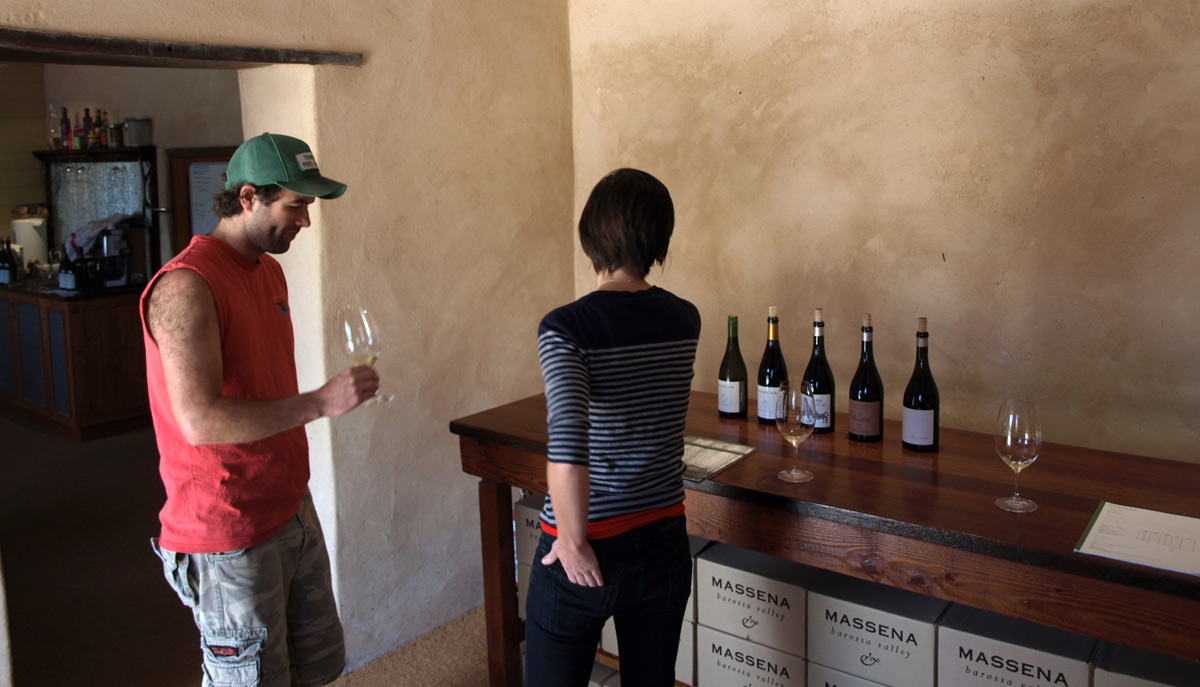Australia spent millions of dollars on building a brand around Shiraz – Australia’s version of Syrah. The marketing paved the way for Australia wine production to triple since 1990. However, despite the success, Australian wines have suffered some serious drawbacks in the media. Wine critics often disregard most Aussie wine as “Critter Wines” – referring to the cute animal designs that adorn wine labels.
It’s time to dig deeper than the bottom shelf at the grocery store and discover what’s happening in Australia’s wine regions. There’s more to Australian wine than Yellow Tail and Little Penguin.
Australia Wine Regions Map

What is Australia Known For?
As you might guess, Australia produces mainly Shiraz followed by Chardonnay. The two varieties make up 44% of the total wine production.
What the production totals don’t say is that Australia is trying to diversify. Growers are replacing many of the Chardonnay and Shiraz plantings in favor of Cabernet Sauvignon, Pinot Noir, and Sauvignon Blanc.
Where is Australian Wine Country?
South Australia is the largest wine production region by far. One major city in South Australia is home to the Australian Wine Research Institute (AWRI). AWRI is responsible for much of the world’s research on dry farming techniques and commercial wine operations. Besides South Australia, keep your eyes peeled for the two up-and-coming wine regions: Western Australia and Victoria.
There are 361,376 acres (2022) of vineyards planted throughout Australia that produce upwards of 621 million liters of wine a year – enough wine to fill almost 250 Olympic-sized swimming pools.
Top Australia Wine Regions
By sheer volume, South Australia, New South Wales, and Victoria are the three major wine regions in Australia.
South Australia and New South Wales are known for their warmer-climate varieties, such as Shiraz and Cabernet Sauvignon, whereas Victoria is known for its cool-climate-loving Pinot Noir.
South Australia
Adelaide is the hub of the largest wine-growing region in Australia. A few miles from Adelaide (the largest city in SA) is Barossa Valley, South Australia’s most prestigious growing area. It’s interesting to note that most of the wine from the area is grown in Lower Murray and Fleurieu (see the geeky list of Geographic Indications below).

Barossa Valley–oldest living vineyards in the world?!
45 minutes from Adelaide are the rolling hills of Barossa Valley. The region is unique because of its isolation from the rest of the world. Phylloxera hasn’t yet infected vineyard soils in Barossa, which means it’s home to some of the oldest living vineyards in the world.

What to seek out from South Australia
Old Vine Shiraz is top-notch; it’s both smoky and rich with spice. Famous producers in the area include Penfolds, Elderton, and Rockford. Keep your eyes peeled for red blends called GSM: Grenache, Syrah, and Mourvèdre – the major blending grapes used in French Southern Rhône wines.

Two famous regions for white wine flank Barossa Valley. Clare Valley produces some of the richest Riesling in Australia, and Eden Valley is known for its very minerally and dry Rieslings.

South Australia in Focus
Check out the expert’s guide to South Australia – especially if you plan on going on a winecation. See Guide
New South Wales
The major production in New South Wales comes from the inland Big Rivers Zone. This area has historically produced much of the commercial Chardonnay and Shiraz from Australia. However, because of severe drought in recent years, more wine grape growers are experimenting with drought-friendly varieties like Tempranillo and Verdelho.
Victoria
Commercial winemaking in North West Victoria makes up the majority of wine production in the entire region. However, the growing areas of interest are cooler and closer to Melbourne, such as Mornington Peninsula and Yarra Valley. The cool climate areas in Victoria have received a lot of praise for their Pinot Noir.

The Great Big List of Australian Wine Regions
South Australia
| Zone | Geographic Indication (GI) |
|---|---|
| Barossa | Barossa Valley, Eden Valley (High Eden – sub-region) |
| Mount Lofty Ranges | Adelaide Hills, Adelaide Plains, Clare Valley |
| Fleurieu | McLaren Vale, Southern Fleurieu, Kangaroo Island, Currency Creek, Langhorne Creek |
| Limestone Coast | Coonawarra, Mount Benson, Robe, Mount Gambier, Padthaway, Wrattonbully |
| Lower Murray | Riverland |
| Far North | Southern Flinders Ranges |
New South Wales
| Zone | Geographic Indication (GI) |
|---|---|
| Big Rivers | Murray Darling, Riverina, Swan Hill, Perricoota |
| Hunter Valley | Hunter (Broke Fordwich, Pokolbin, Upper Hunter Valley sub-regions) |
| Central Ranges | Mudgee, Orange, Cowra |
| Northern Rivers | Hastings River |
| South Coast | Shoalhaven Coast, Southern Highlands |
| Southern NSW | Canberra District, Hilltops, Gundagai, Tumbarumba |
Victoria
| Zone | Geographic Indication (GI) |
|---|---|
| Port Phillip | Mornington Peninsula, Geelong, Yarra Valley, Macedon Ranges, Sunbury |
| NW Victoria | Murray Darling, Swam Hill |
| Central Victoria | Goulburn Valley, Strathbogie Ranges, Upper Goulburn, Heathcote, Bendigo |
| Western Victoria | Henty, Grampians, Pyrenees |
| NE Victoria | Glenrowan, King Valley, Beechworth, Rutherglen, Alpine Valleys |
Western Australia
| Zone | Geographic Indication (GI) |
|---|---|
| SW Australia | Margaret River, Geographe, Great Southern (Albany, Denmark, Frankland River, Mount Barker, and Porongurup sug-regions), Pemberton, Backwood Valley, Manjimup |
| Greater Perth | Peel, Perth Hills, Swan District (Swan Valley sub-region) |
Queensland
Granite Belt and South Burnett
Tasmania
Tasmania has a southeastern growing area and a northern growing area both under the Tasmania GI